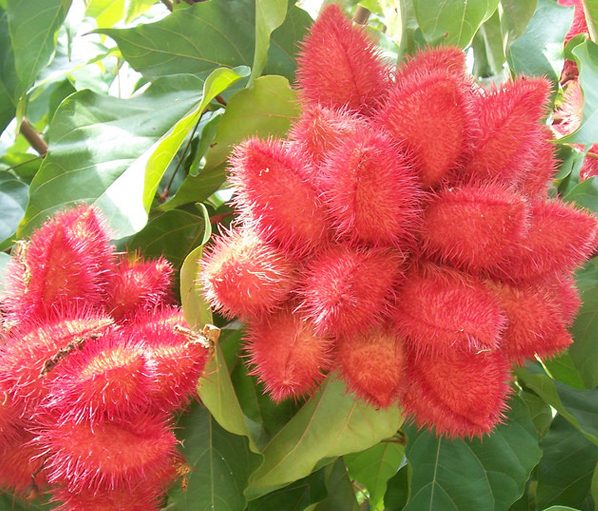A self-help group in West Bengal’s Saithia in Birbhum district has been preparing eco-friendly colour powder (abir) from lipstick trees for Doljatra and Holi this year.
What is the lipstick tree?
Its common name is Anato or Annatto tree or lipstick tree. Local variations include Latkan in Hindi and Bengali to Rangamali in Kannada to Sinduri in Gujarati, Jolandhar in Assamese to Sendri in Marathi. It flowers all through the year, with white and light pink flowers. The tree grows best in humid and warm regions. The flowers are small, followed by fruits with hairy outgrowths that are reddish to rich brown in colour. The fruits have soft seeds and soft powdery coating which is used for edible food colouring and fabric dye.
The colour element is known as annatto or achiote, which was used to paint lips or draw on the body. That is how it got the name “lipstick tree”.
How is the abir prepared & marketed?
The abir is prepared from the powdery coating from the fruits of the tree. For the past few weeks, the abir has been sold in various state government outlets. It is also being sold during the Basanta Utsab in Shantiniketan, said the additional District Magistrate (Development) of Birbhum, Subhasis Bej. However, precautions regarding Coronavirus have led to cancellation of several Doljatra celebrations, including the official Basanta Ustab. But people are expected to go out and celebrate even if not in as large numbers as earlier years.
The government is helping the self help group in marketing the abir.
The trees that will be utilised to procure the seeds for the abir are found in Birbhum.
Other than making abir from the tree, women of the SHG will also prepare abir from other more common natural sources like the marigold, rose and other flowers.
Used as food colour
In 2018, the state agriculture department had taken the initiative to commercialise the use of dye from lipstick tree in various food products. Work on it was started in the Phulia Agriculture Training Centre in Nadia. The West Bengal government plans to bring down the use of harmful artificial colours in food by promoting natural dyes as this one.


Comments are closed.